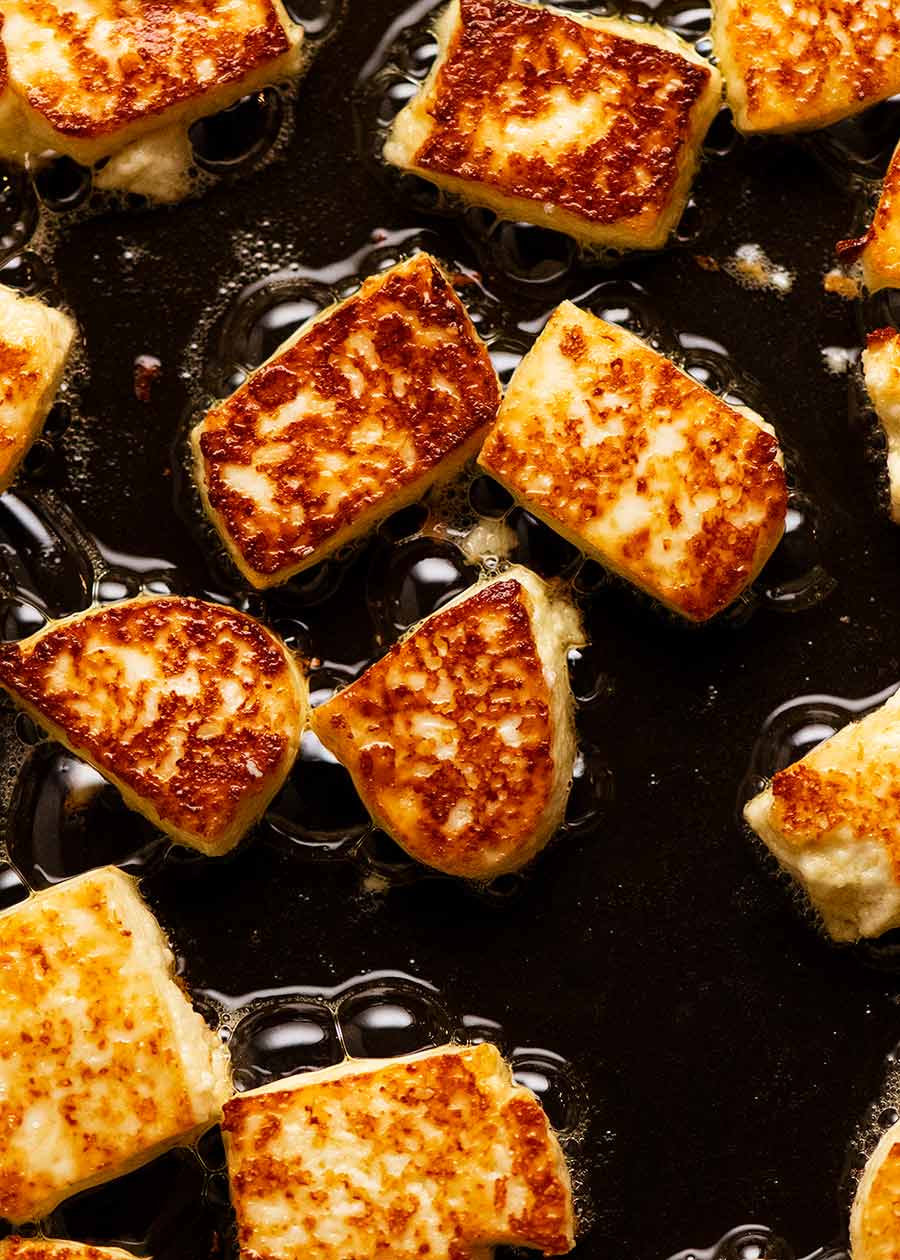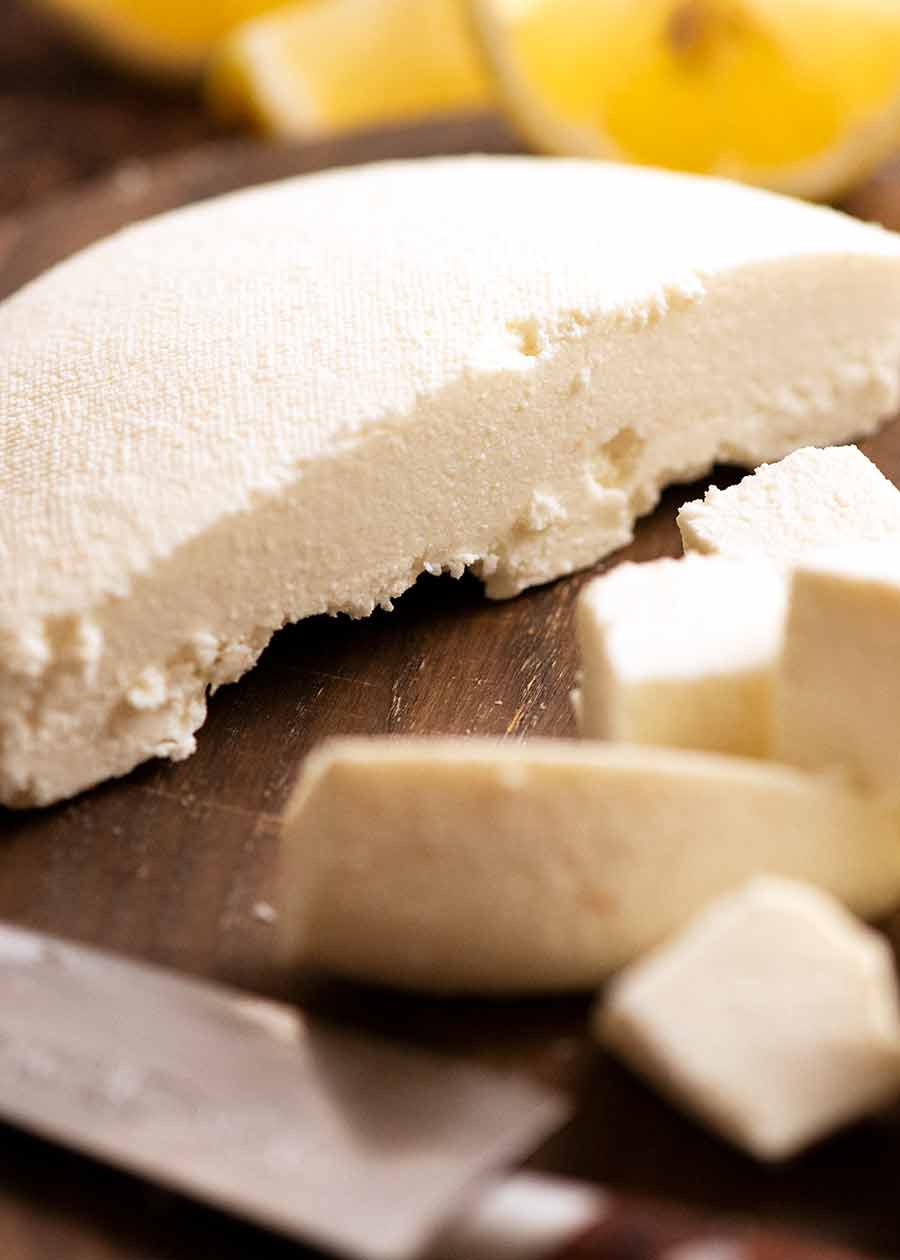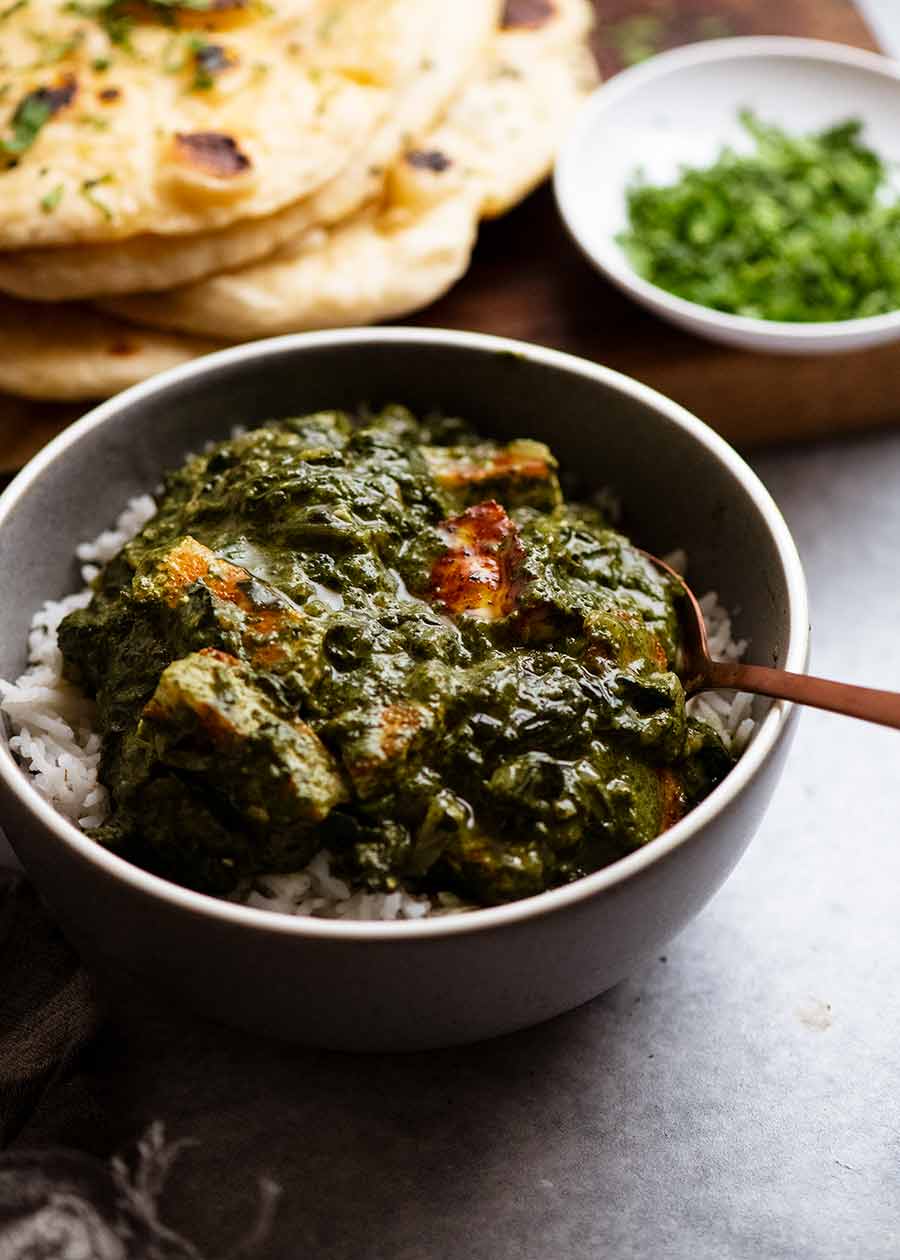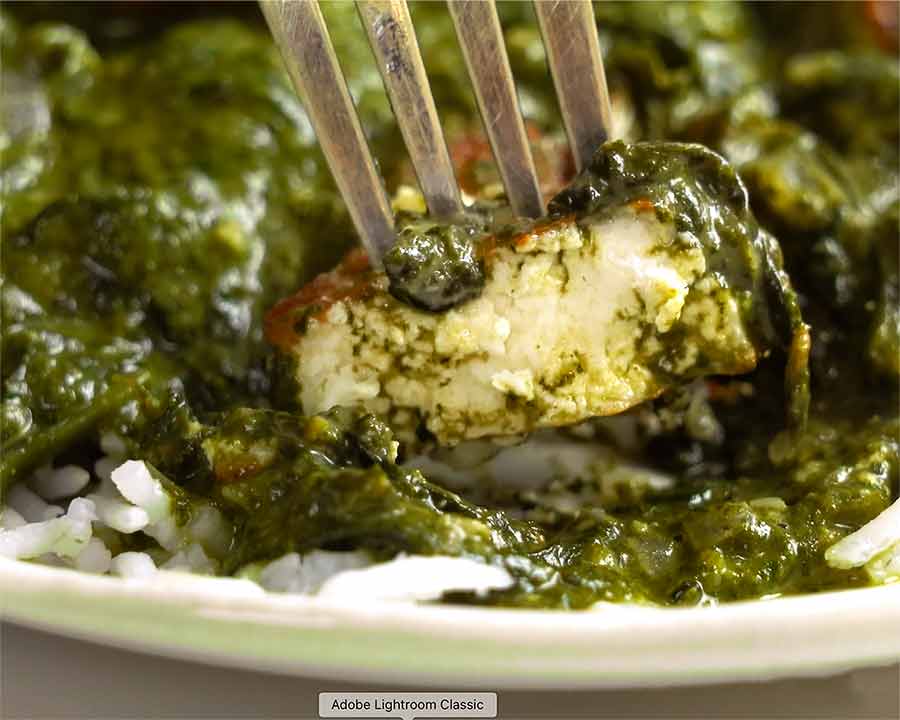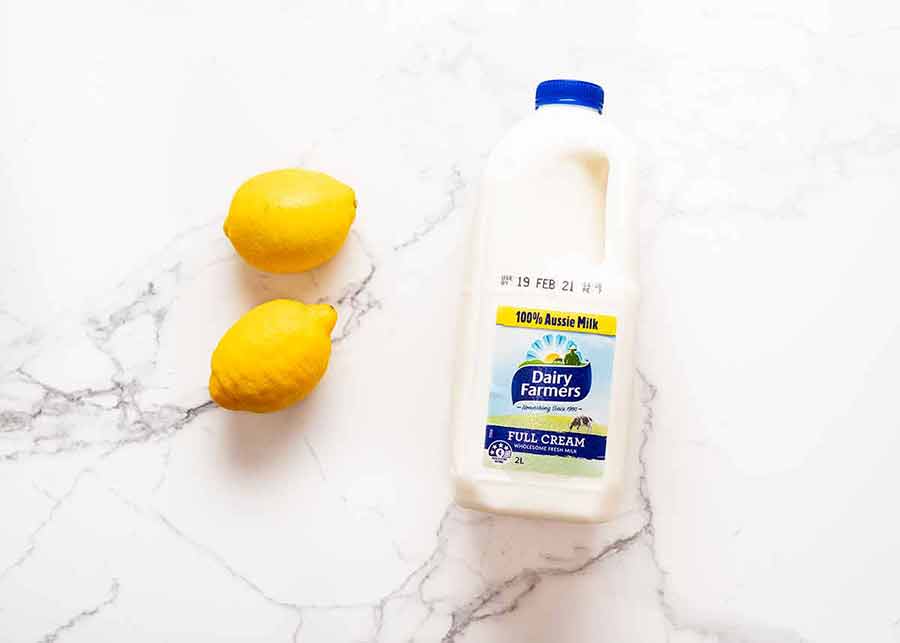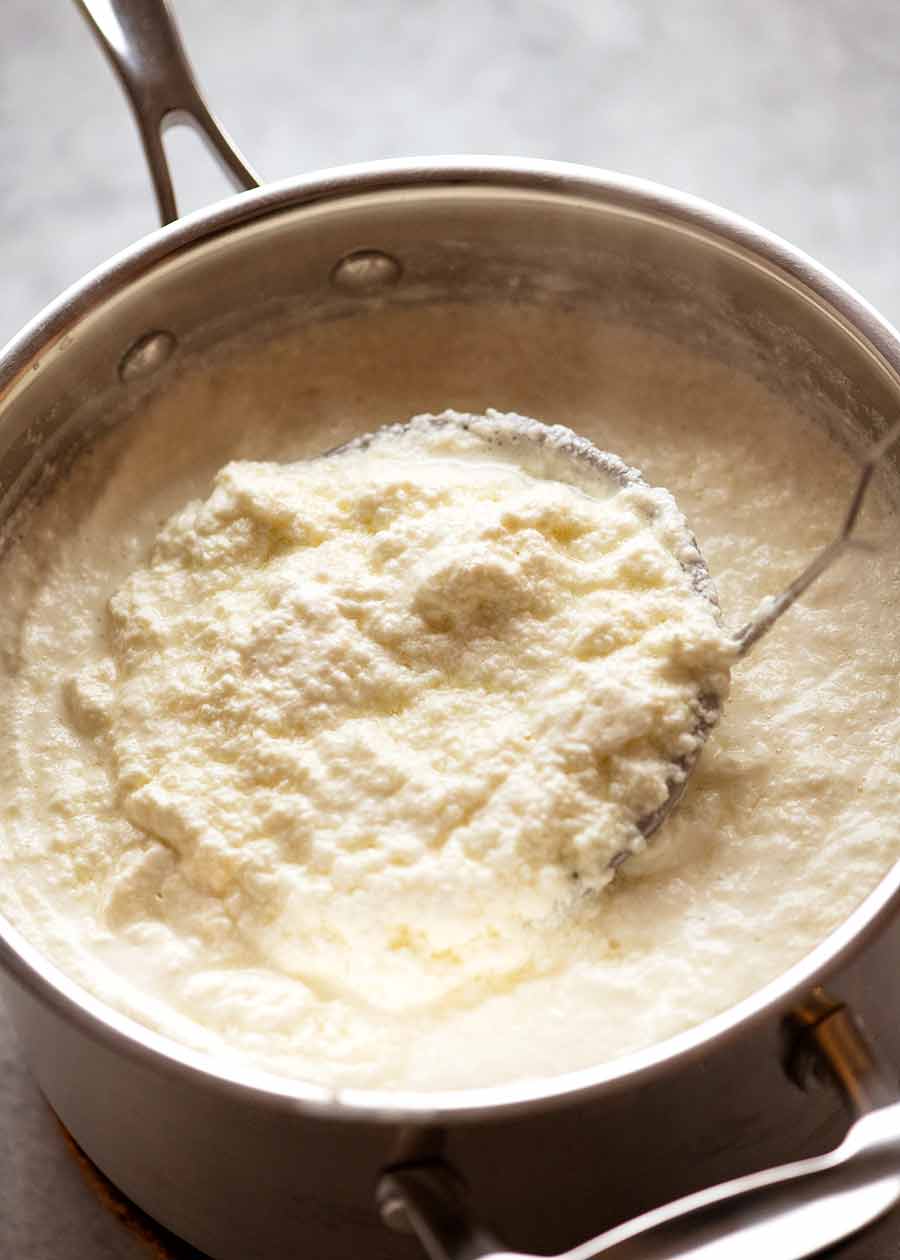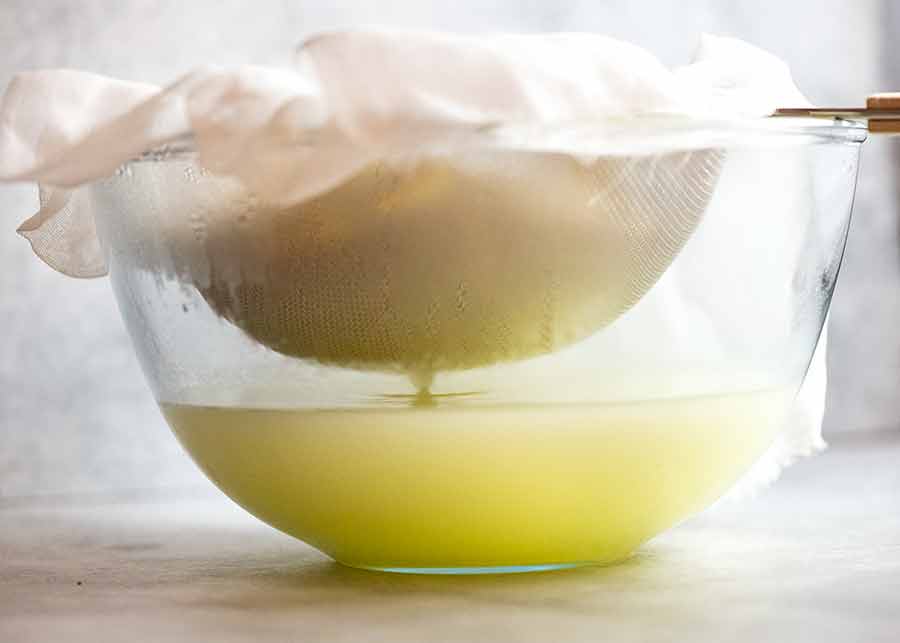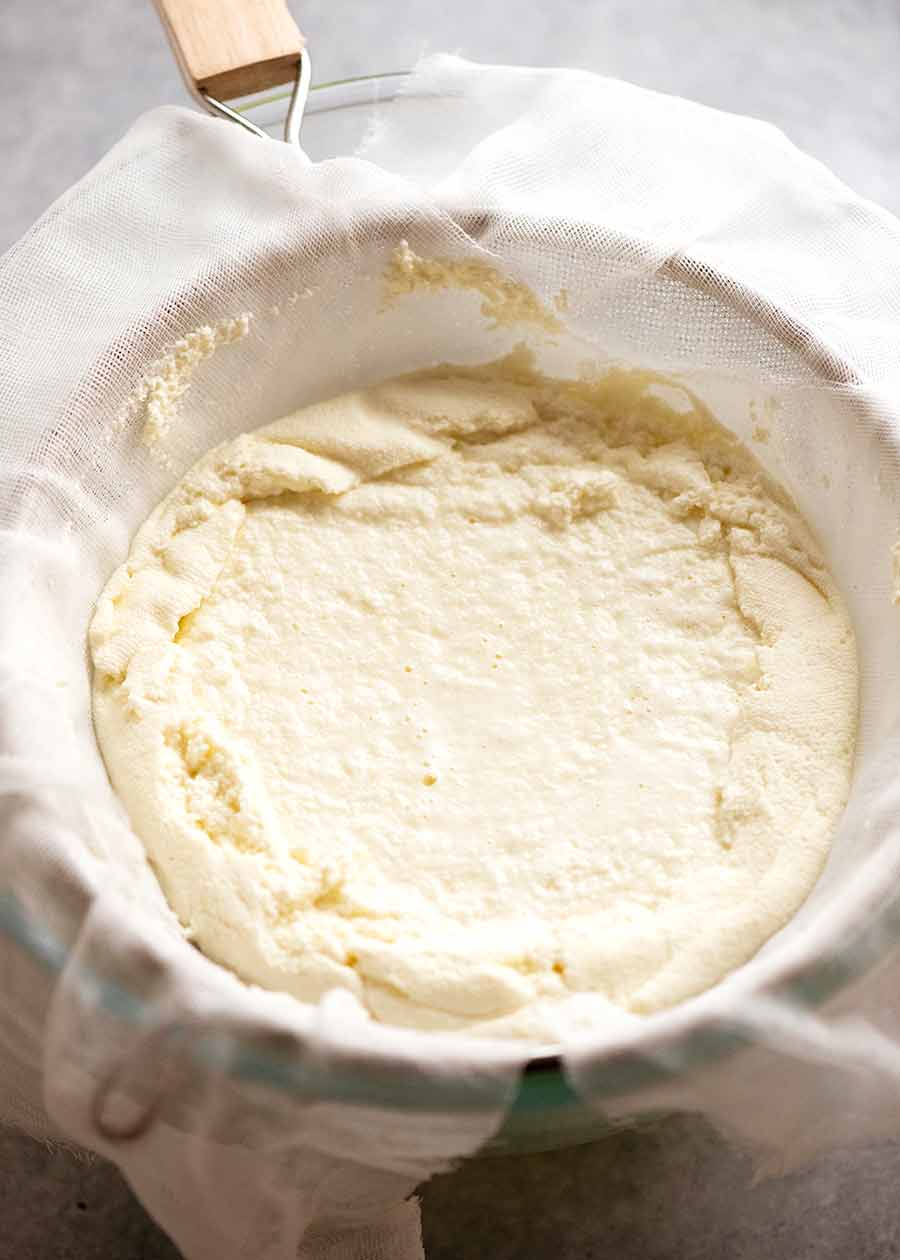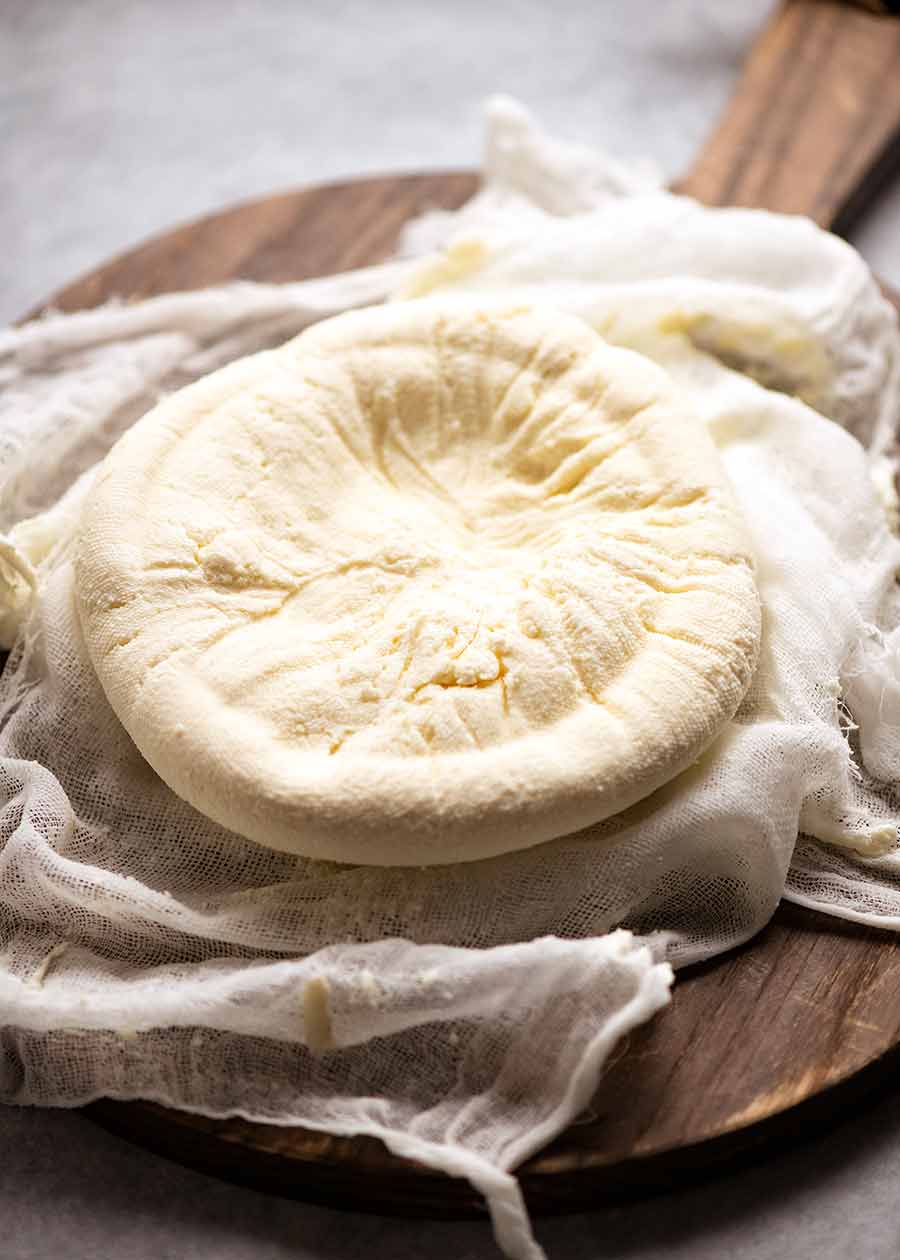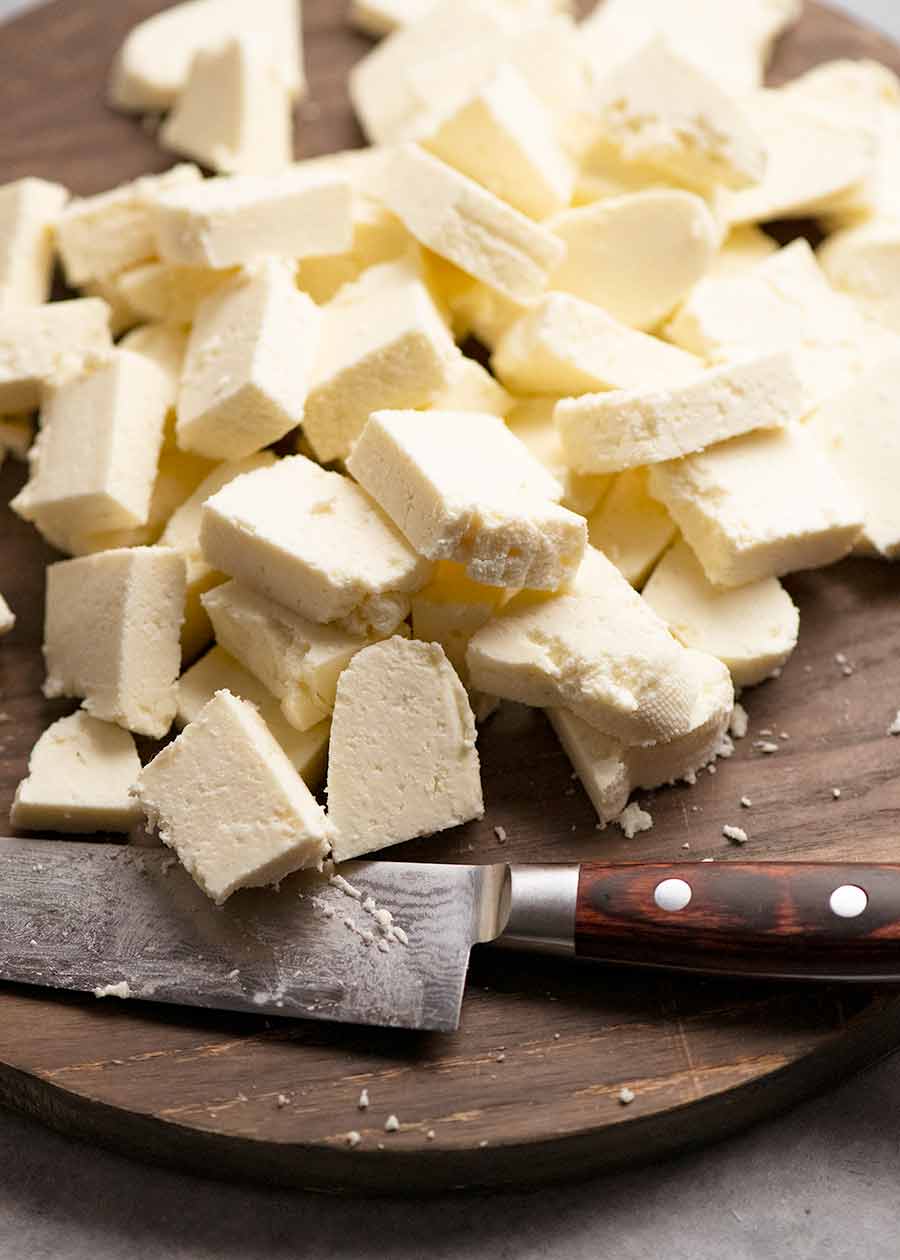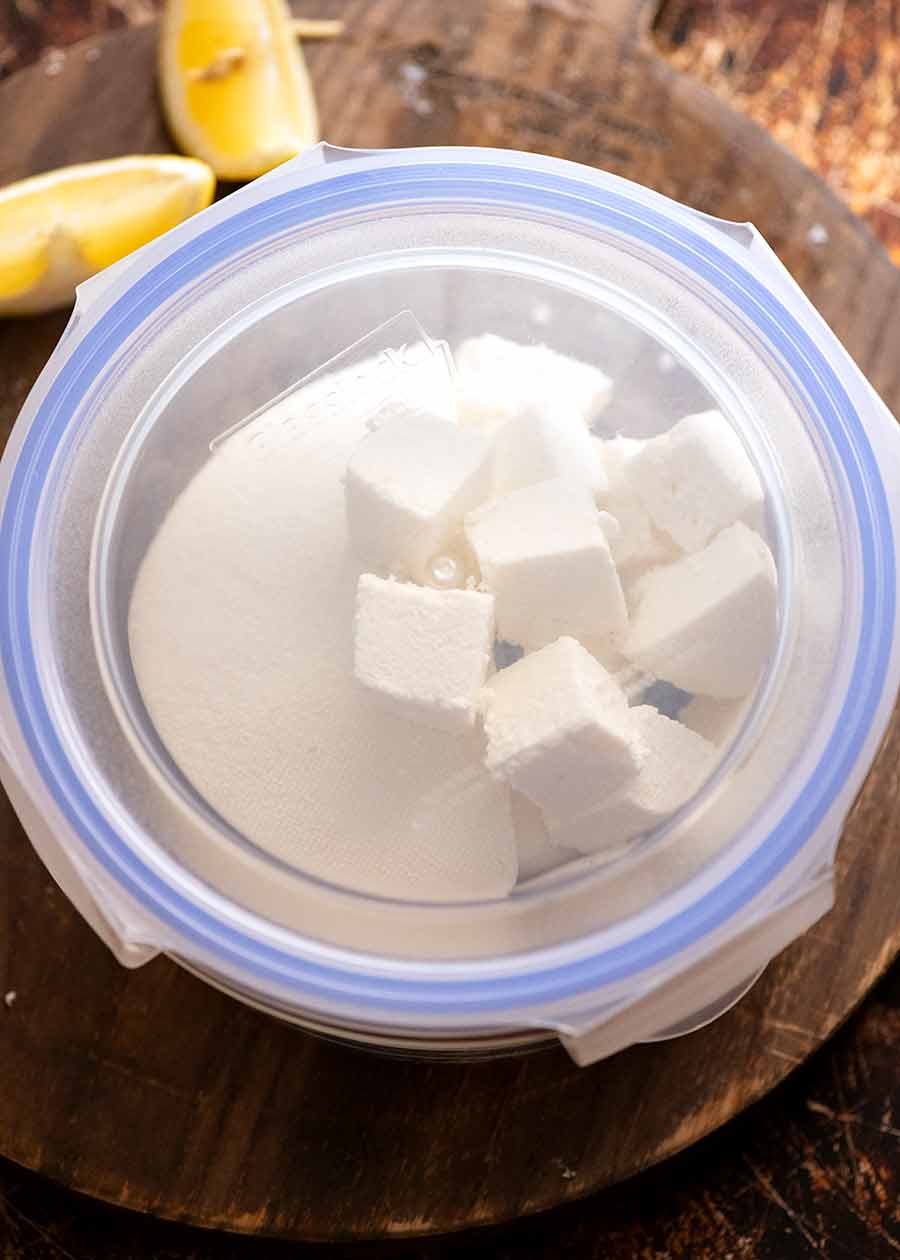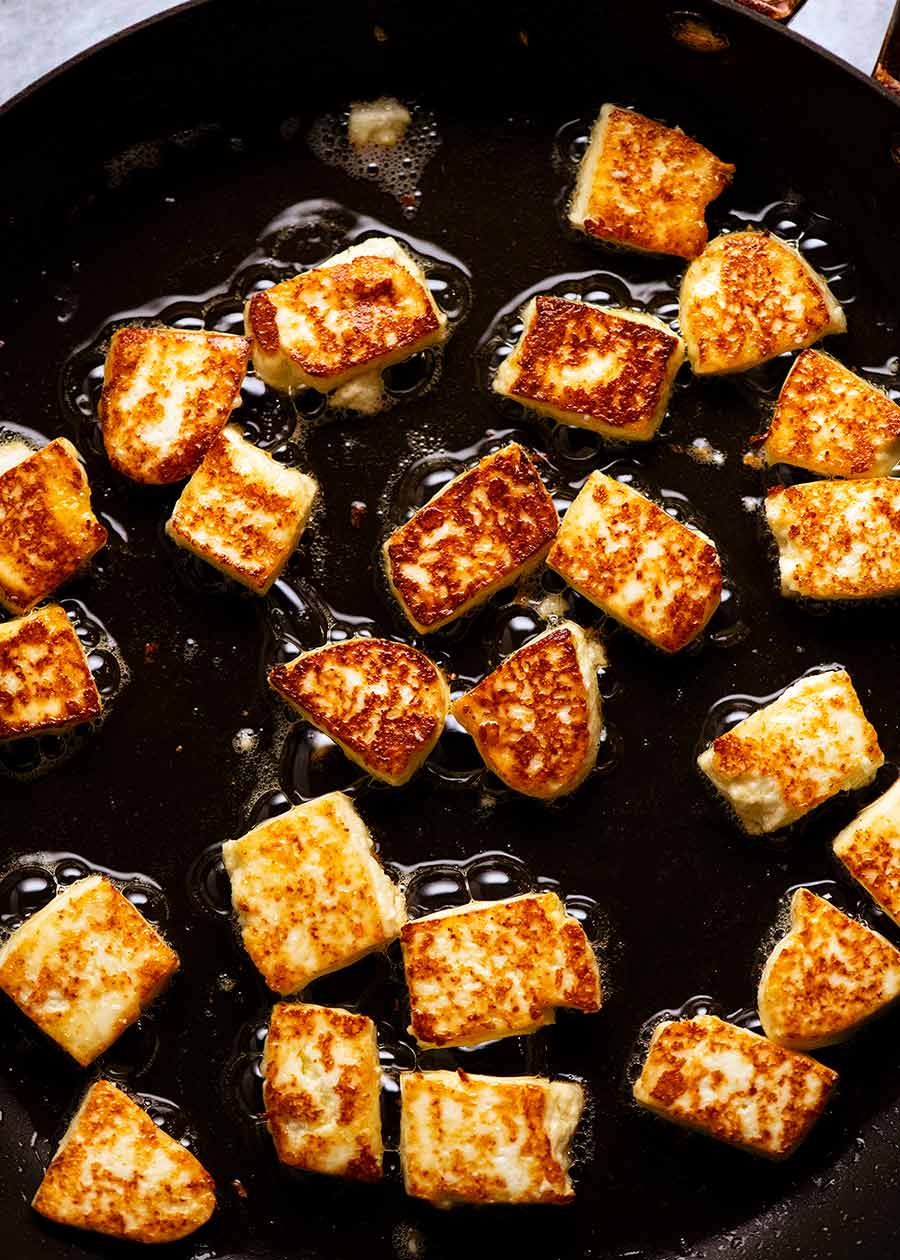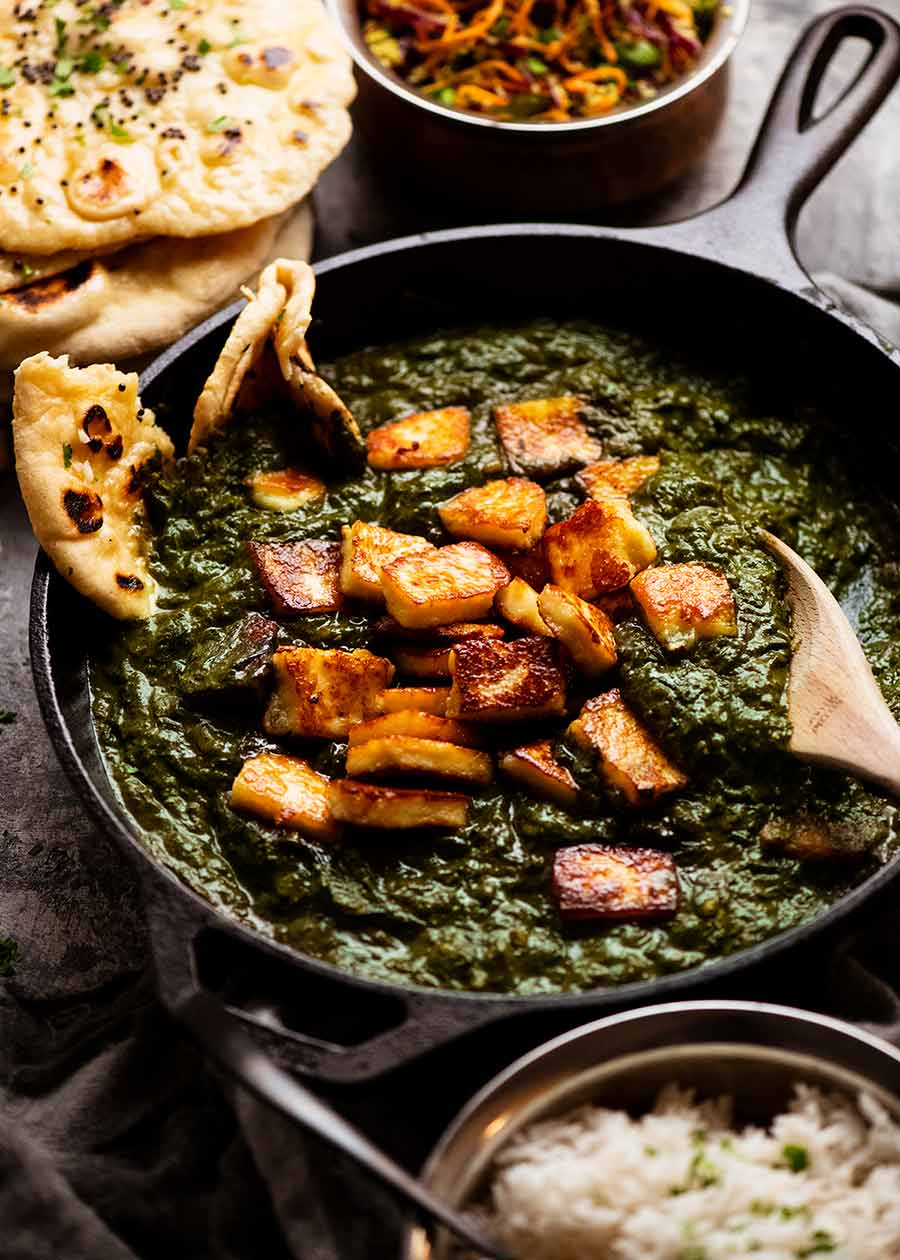Super-easy to make, and so very satisfying!
Paneer – Fresh Indian cheese
Paneer is a fresh cheese that is a common ingredient used in northern Indian (as well as other nearby countries’) cooking. Perhaps most well known is Palak Paneer, the iconic green spinach curry served with golden pan-fried paneer! These days, you can buy paneer at large grocery stores in Australia such as Coles and Woolworths. But it’s much harder in texture and not a great product. Homemade is far superior – it’s softer and creamier. Besides, it’s such a cinch to make and lasts for a couple of weeks in the fridge. So why wouldn’t you just make your own??
What paneer tastes like
Paneer is a fresh cheese so it’s somewhat similar to other fresh cheeses like ricotta, quark and cottage cheese. It’s got a milky flavour and a lovely texture a bit like firm ricotta. It’s not as creamy as say a brie, because it doesn’t have anywhere near the same amount of fat. Paneer is unsalted so it’s quite bland if eaten plain. For Indian cooking, it’s intended to be eaten with flavourful sauces or spicing – like the Spinach Curry sauce pictured below for Palak Paneer!
What you need for homemade paneer
All you need is milk, and lemon juice or vinegar. Gee, I wish more recipes on my website called for just 2 ingredients! 😂
Milk – It has to be full-fat, otherwise it won’t set properly. I’ve only used cow’s milk, but I’ve read that buffalo milk works just as well; andLemon juice or vinegar – This along with heat is what causes the milk to curdle, the starting point of any cheese. Curdling is when the dairy separates from the liquid. I prefer lemon juice because it’s fresher and not as harsh in acidity flavour-wise, but standard white vinegar works too.
How to make paneer (fresh Indian cheese)
Milk not curdling? Turn the stove back on and bring the milk to a boil again, just until it starts separating. Then turn the stove off and keep stirring. Once the milk is hot, turn the stove off. Add the lemon juice and stir for 1 minute;
How to cook and use paneer
Paneer is typically cut into small bite-size pieces, either cubes or rectangles. Then they are either: What’s cheesecloth? It’s a thin, loose-woven fabric used for cheese-making and other cooking purposes. It acts like a sieve, but the holes are much finer than standard utensils. Don’t try to drain paneer in a fine-mesh strainer or sieve –- you’ll lose the curds through the holes! Where to find cheesecloth? At fabric stores and some kitchenware stores. You can get it for as little as $3 per metre. Cheesecloth alternatives – Clean blue Chux wipes (yes, seriously!), a double layer of good-quality paper towels (don’t use cheap paper towels, they will disintegrate), or very thin handkerchiefs. The paneer is drained once liquid stops dripping out. At this stage, the paneer will still be quite soft and watery. You don’t need to use brute force here because we will be draining further in the fridge. Just squeeze out what you can. If the paneer starts getting forced out through the cheesecloth holes, you’re squeezing too hard! At this stage, the paneer will still seem watery and wobbly. It sets more in the next step! Leave in the fridge for 4 hours. Try not to leave much beyond 4 hours. The longer the paneer is in the fridge with the weights on it, the firmer it will get (as more liquid continues to be pressed out of it). You can either use it immediately for cooking, or you can keep it for up to 2 weeks in the fridge. Just keep it whole in an airtight container, then cut off pieces as you need them!
Stirred into curries, just as-is. Paneer doesn’t need cooking, just heating through. The idea here is that the paneer absorbs the flavour of the curry sauce; orPan-fried until golden – like you do halloumi – before being stirred into curries such as Palak Paneer, and other dishes.
It will come as no surprise to anyone that I prefer the latter. Because, as I always say, browning = flavour!! The paneer looks irresistible when it’s crispy and golden on the outside. You just want to eat it straight out of the pan. You really will. I do! Bonus: Pan-frying also causes the paneer to set better, so it’s less likely to break up when stirred into curries – a common problem when uncooked paneer is stirred into curries.
Dishes using Paneer
I’m sharing today’s homemade paneer recipe for use in Palak Paneer, India’s famous Spinach Curry with Paneer. But there’s a wide variety of other Indian dishes that use paneer, both savoury main dishes as well as desserts and snacks. It’s also common to substitute paneer for meat in some dishes, as it makes a great vegetarian alternative that’s equally filling and satisfying. Here are a couple of curry recipes I’ve previously shared that can be made vegetarian by switching the meat with paneer:
Paneer Tikka Masala – Substitute the chicken with paneer in my Chicken Tikka Masala recipe; andPaneer Butter Masala Curry – Switch the chicken in my Butter Chicken.
Enjoy! – Nagi x
Watch how to make it
Life of Dozer
Weekend teeth inspection. I always think he has disproportionally small teeth for a dog that big!!

